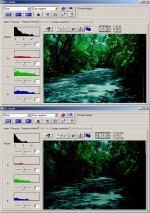N
Nick R.
Guest
Finder said:I never had a problem with slide film in my Hexar Silver. Even the automatic exposure system did a great job.
BTW, did these cameras have leaf shutters and could the inaccuracy of the shutter speed compensate for the shutter inefficency? Just a thought.
You're right! I should have said "except my Hexar Silver" which takes beautiful slides.
They were all leaf shutter cameras. Canon, Konica, Yashica (only at top speed).


